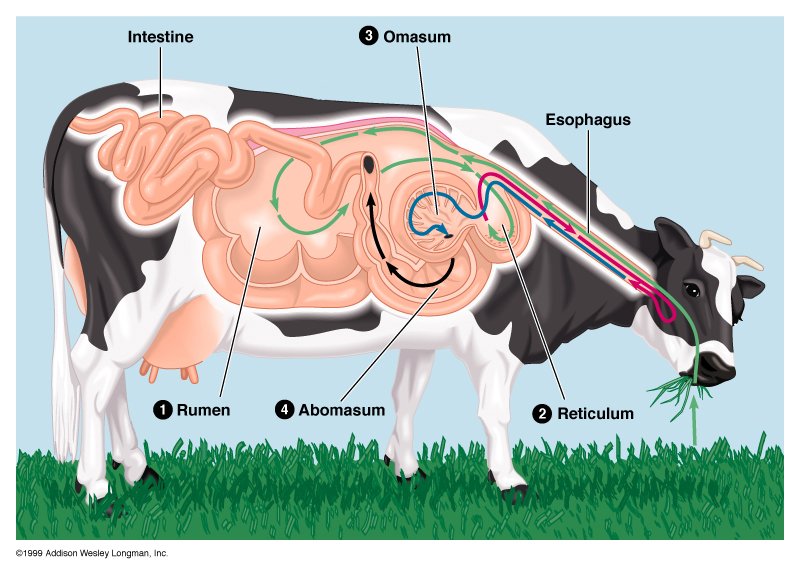Ruminant digestion occurs consecutively in the stomach of 4 chambers. the mass is finally passed to the true stomach, Avomassum, where the digestive enzyme lysozyme breaks down bacteria and releases nutrients. The ruminant digestive process begins with chewing and swallowing food. Ruminants swallow food by eating and swallowing as much as possible, rather than completely chewing the food they eat. Ruminants are one of the most important of the four chambers of the stomach. The ruminant lumen function helps these animals digest high fiber content in food. Therefore, the rumen function of animals is the most important function to complete the digestive system. Ruminant digestive tract Ruminant digestion occurs consecutively in the stomach of four chambers. The plant material is first taken up in the lumen, where it is mechanically processed and exposed to bacteria rather than breaking down cellulose (pre-intestinal fermentation). The reticulated tissue allows the animal to regurgitate. Reprocess particulate matter (“chew”). Saliva is a buffer and nitrogen source for microbial populations within the lumen. Saliva contains enzymes that break down fat (saliva lipase) and starch (saliva amylase) and are involved in the recycling of nitrogen into rumen. The most important function of saliva is to buffer pH levels in the reticulated tissue and lumens.
How do ruminants digest food?
These animals can ferment, regurgitate, and re-bite the food they eat. The digestion of ruminants is quite different from the human digestive system. The digestive process usually begins in the mouth and continues to the esophagus, stomach, and intestines. However, the digestive system ruminants are not the same.
What is the function of the ruminant lumen?
The ruminant lumen function helps these animals digest high fiber content in food. Therefore, the rumen function of animals is the most important function to complete the digestive system. Ruminant gastrointestinal tract Knowing the ruminant gastrointestinal tract is important for explaining the digestive process of ruminants.
What is rumen digestion?
Ruminant-a special type of digestion. Aminals eating grass must have noticed that they are constantly chewing food even when they are not eating. They have a special part in their stomach called the lumen.
What is the function of saliva in the digestive system of ruminants?
Anatomy and function of the gastrointestinal tract of ruminants. Saliva helps chew and swallow, contains enzymes that break down fat (saliva lipase) and starch (saliva amylase), and is involved in the recycling of nitrogen into rumen. The most important function of saliva is to buffer pH levels in the reticulated tissue and lumens.
How does digestion occur in ruminant class 7?
The ruminant digestive process begins with chewing and swallowing food. Ruminants swallow food by eating and swallowing as much as possible, rather than completely chewing the food they eat. .. The generated kado can regurgitate into the animal's mouth and chew again. 14янв. 2021
How many steps do ruminants take to digest food?
Therefore, ruminants swallow the same food twice, so they digest the food in two steps.
How does the cattle digestion process take place?
Cows are known as "ruminants" because the largest pouch in the stomach is called the lumen. .. This swallowing process, "release of swallowing," re-chewing, and re-swallowing is called "ruminant," or more commonly, "ruminant." Rumination allows cows to chew the grass more completely and improve digestion.
How is digestion performed in animals other than ruminants?
The last gastric compartment is the abomasum, which is very similar in structure and function to the non-ruminant glandular stomach. Acids and some digestive enzymes are added to the stomach contents as they move by contraction of the muscle wall.

Below you will find two helpful answers on a similar topic. 👇
What part of South America do guinea pigs come from?Are Jersey cows profitable?
